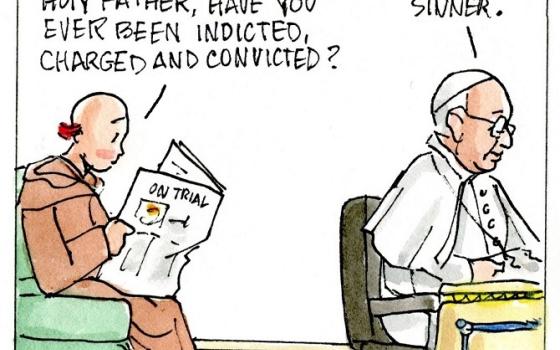They troll the halls of power, ride in speeding elevators to the top floors of corporate influence, and mix among the elites everywhere – everywhere, it seems, except the Catholic church.
They are the grey-suited men and women who, since at least Watergate and the growth of high-speed mass media, have practiced the precision art called “crisis management.”
I was in the news business long enough to know more than a few of them, and know that what they taught to titans in trouble was the truth. It worked. And the people who did not heed their advice generally did so because the truth to was too hot to handle.
Crisis management in our age boils down to two simple Golden Rules:
- Get all the bad stuff out there.
- And get it out there as fast as you can.
It sounds counter-intuitive, against the basic human survival instinct. When something goes wrong, we circle the wagons, protect the clan, and wait for the danger to blow over. But crisis managers know that nothing blows over anymore. They understand that in modern times the truth will always come out – the best you can hope for is to control it and label it.
In any scandal, the worst scenario for the people in trouble is that the bad news leaks out in an unending drip-drip-drip. The story never goes away. You are never in control of what gets out and how it is presented. Watergate is the prime example: the resources of the presidency were thrown at containing the damage, and it only grew worse.
In the decades since, a national (and now international) template has emerged: a scandal brews, but the celebrity/politician/corporation “gets out in front of it,” owns up to the misdeed before anyone else has a chance to expose it. They take their lumps in the public media square, suffer the shame of the glaring lights, and institute changes (personal or political) to insure the transgression does not happen again.
Imagine if the church had done this more than a decade ago, when the child sex abuse scandal first broke. What if the Vatican itself had launched a forceful investigation across the globe to uncover everything, oust the guilty, and repair the damage in full view of a watching world? It would have “owned” the problem -- and the solution.
But it did not, and in the past few weeks -- as the scandal has once again blossomed and spread -- the reason has perhaps come into true focus.
Watergate provides the analogy here as well. During that scandal, Republican supporters of Richard Nixon begged the president to come clean, get it all out there -- confident the entire mess was based on a mere “third-rate burglary” blown up into a crisis by political enemies.
But Nixon, it turned out, knew better. He knew that most of the highest officials of his administration were implicated in the embroglio -- so full disclosure was not an option. The golden rules of crisis management could not apply because the crisis was both too deep and too high.
That is what these last couple of weeks have looked like. As with Watergate, the powerful turn on the press (that pesky New York Times yet again!), give partial answers and modest mea culpas. But with each drip-drip-drip, another high-ranking bishop or cardinal is implicated -- and the scandal travels higher.




